In this article, we explain how you can improve children’s vocabulary using word maps as graphic organizers. We’ve included a variety examples and blank word map templates – all free for you to download.
You might also find it useful to read our article, ‘How Can I Improve My Child’s Vocabulary?‘, where we discuss other important aspects of vocabulary development.
Disclaimer: We support the upkeep of this site with advertisements and affiliate links. We may earn a small commission if you click on the ads or links or make a purchase. There is no additional cost to you if you choose to do this.
Contents:
- Introduction
- Types of word Maps
- What Should Be Included in a Word Map?
- How to Teach Word Mapping
- Example Word Maps
- Useful Links
- Blank Word Map Templates
- Further Information
- References
Introduction
There are a variety of different styles of word maps and a number of different terms are used to describe them. For example, they are sometimes called ‘vocabulary maps’, ‘semantic maps’ or ‘concept of definition maps’.
However, no matter what term is used to describe them, all word maps serve a similar purpose. They’re all designed to help children see the relationships between words, knowledge and concepts by organising the information in a visual framework.
Visual representations of information are know as graphic organisers in education circles and Dr Robert Marzano found that these strategies were particularly effective when he compiled his meta-analysis of classroom instruction techniques.1
Combining linguistic information with non-linguistic representations (imagery) utilises what psychologists call the ‘dual coding theory’. According to Marzano and others, the more we use both systems of representation, the better we are able to understand and recall knowledge. Essentially, dual coding gives us two ways of processing and remembering information rather than just one.
Types of Word Maps
Word maps can be constructed in different ways – some are structured as simple tables, whereas others have more complex diagrammatic or pictorial forms. And there is also some variation in the details included in different styles of word maps.
Specialist software can be purchased to construct graphic organisers, but other products that are widely available, such as Microsoft Word or PowerPoint, can also be used to make templates. For example, the SmartArt function in PowerPoint and Word provides a wide choice of graphics, including the following examples:
You can also design your own style of word map templates using tables, shapes or text boxes in Word or PowerPoint, or you can use or adapt some of the blank word map templates we’ve included in this article.
No single style of diagram or table has been shown to be more effective than others. The important thing is that the word map should help to structure and organize the information in a meaningful way.
And it’s not essential or even important to use graphics from computer software. You can use paper templates or simply hand-draw the diagrams on blank paper.
In fact, there may be some advantages in getting your child to handwrite the information rather than type it. That’s because students who take notes by hand seem to learn conceptual information better over the long-term than students who write their notes on laptops.2
Back to contents...
What Should Be Included in a Word Map?
The simplest word maps usually include a definition, a synonym and a sentence containing the word. The short videos below show some relatively simple variations:
More elaborate word maps might contain an assortment of the components listed below:
-
- Definition – this could be copied straight from a regular dictionary, or it might be a simplified version that’s more accessible to children. We’ve included some links to child-friendly sources of information in this article. It’s also important to consider alternative definitions if the word has more than one meaning.
- Synonyms – see if you can prompt your child to think of some synonyms. Ask them, ‘what is this similar to?’ Or, ‘what other words do you know that mean the same thing as this word?’ Use a thesaurus to find more examples.
- Antonyms – ask your child, ‘what is the opposite of this?’
- Word structure/origins – identifying common root words, prefixes or suffixes can help children understand the meaning of words (and this can also help with spelling). See below for links that can help you find word origins.
- Related Words – recognising related words can also improve a child’s understanding and widen their vocabulary.
For example, if the new vocabulary word was the adjective ‘expensive’, you might also include the adverb ‘expensively’, the nouns ‘expense’, ‘expenses’ and ‘expenditure’ and the verbs ‘expend’ and ‘spend’.
You don’t need to explain the correct grammatical terminology for each word if your child hasn’t studied much grammar in school yet. Just thinking about related words and how they might be used in different sentences can still be beneficial.
For some technical words, it can help to look beyond grammatical variations. For example, if you were introducing the word ‘soluble’ in a scientific context, it would also be helpful to consider the related words ‘solute’, ‘solvent’ and ‘solution’. All of these words start with ‘sol’, and probably originate from the Latin word ‘solvere’ which means ‘to loosen’ or ‘unfasten’.
You could discuss how molecules (or ions), which are stuck together in the solid form (the solute), work loose when they dissolve in a solvent to form a solution. Your child might notice that the word dissolve also contains ‘sol’.
-
- Example sentence(s) – if your child first encountered the new word in a book, you could copy the sentence from the book as one example and then help help them to make up a sentence of their own. You might want to help them construct more than one sentence if the word has more than one meaning so they can see how it’s used in different contexts.
- Pictures or examples – representing the meaning of words with concrete examples or images can improve a child’s understanding and make the information more memorable.
- Mnemonic / association – this might not be possible for every word, but see if there is a way of linking the word to something your child already knows. Considering the word structure and origins can sometimes help with this step.
The different sections on a word map could vary for different types of word. For example, you might choose some different categories for nouns than you would for verbs or adjectives.
The complexity of the word might also influence the amount of detail you include in a word map, but it’s probably better to put in a bit more information than to have too little…
Our brain is made up of an enormous network of neurons, and learning something new causes the brain to build connections between these neurons.
Cognitive neuroscientists tell us the more meaningful connections to prior knowledge we can make, the better will be our understanding and our ability to recall the information. 3,4
In the very simplified model below, the dots represent neurons (brain cells) and the lines represent the connections between neurons (synapses).
How to Teach Word Mapping
Before you get your child to complete a word map independently, it can be helpful to explain and model the process with them first.
Your child will understand the process better if you teach them using real examples, rather than just explaining the process in an abstract way. And it’s better for them to see a variety of examples instead of just one or two.
We’ve included several examples below, most of which are in a tabular form. Although tables aren’t as elaborate as some alternatives, they’re still a useful way of organising information in a logical order.
Even if you intend to construct a more diagrammatic style of word map, it can sometimes be helpful to compile the information in a table first.
Example Word Maps
You might find the links below helpful when you are compiling the information for word maps. Explain to your child that using information from a variety of sources will give them a more thorough understanding of a word.
Useful Links:
Vocabulary.com We mentioned this site in our article, ‘How Can I Improve My Child’s Vocabulary?’ As well as providing child-friendly definitions, it uses sophisticated computer algorithms to help children learn new words and can be played as a game. They ask questions about words in different contexts and also provide information about word structure for some words.
The Kids.Wordsmyth dictionary is a useful resource for finding simple definitions and related words.
Merriam-Webster’s Learner’s dictionary is designed for students with another fist language who are learning English. However, the definitions are also useful for children because they are generally shorter and use simpler language.
Thesaurus.com is great for synonyms and antonyms. It claims to be the world’s largest free online thesaurus.
Dictionary.com is useful for finding out about word structure because it provides information on word origins.
The Thinkmap Visual Thesaurus is an interactive dictionary and thesaurus which creates word maps of related words.
VISUWORDS™ is another interactive online graphical dictionary that shows creative associations between words.
IXL Learning cover 8000 skills in 5 subjects including phonics and reading comprehension. You can click on the following link to access a 7-day free trial if you live in the US.
If you live outside of the US, you can get 20% off a month’s subscription if you click on the ad. below:
Back to contents...
Blank Word Map Templates
Download the templates as PowerPoint slides if you want to edit them in some way. Download them as pdf documents if you want to use them as they are.
Further Information…
References
- Marzano, R. (2001), Classroom Instruction that Works, ASCD.
-
Take Notes by Hand for Better Long-Term Comprehension, Association for Psychological Research (April 2014): http://www.psychologicalscience.org/index.php/news/releases/take-notes-by-hand-for-better-long-term-comprehension.html
-
Learning in the brain: https://sites.google.com/view/efratfurst/learning-in-the-brain
-
Willingham, D. (2006), How Knowledge Helps, American Educator: https://www.aft.org/periodical/american-educator/spring-2006/how-knowledge-helps
If you’re looking for an easy and effective way to improve your child’s reading and spelling, try using word mapping worksheets.
It’s a little cringy to think about how I used to say this:
“Here you go. Your child need to memorize all these words.”
I used to tell parents this at Back to School night in September. You might have been taught to read by memorizing words too.
But the science of reading has helped teachers and parents everywhere learn better ways.
One of them is word mapping. This blog post goes through all the steps for how to map words and you’ll find word mapping worksheets, too!
What is word mapping?
Word mapping is just another name for phoneme-grapheme mapping. This means learners hear the sounds and then they write down the letters that spell that sound.
So it’s pretty much just spelling!
However, what makes word mapping more effective is the use of a graphic organizer. This makes word mapping more structured for learners.
At least 50% of readers need systematic and explicit instruction in order to read and write and word mapping achieves that.
What skills do children need for word mapping?
Before children can do word mapping, they need a number of skills.
Learners need to:
- print letters within a defined space
- name letters
- identify letter sounds
- have good phonemic awareness skills
Specifically, children need to be about to segment and isolate sounds with a word. Your child will not be ready to do word mapping without basic phonemic awareness skills.
And sadly, there is a lot of controversy on the internet about whether or not learning letter names is important. Yes, learning the alphabet is critical for being able to spell sounds.
Is word mapping the same as orthographic mapping?
No, word mapping is not the same as orthographic mapping. Orthographic mapping is a cognitive process where the brain has made the sound-letter connection and permanently stored words.
However, word mapping promotes orthographic mapping. It draws a learner’s attention to the individual phonemes in a word and the letters that spell those words.
According to David Kilpatrick, it can only take 1-5 repetitions of word mapping for a student to master a new word. However, with traditional sight word memorization, it can take hundreds of exposures.
How do I teach word mapping?
To teach word mapping, you really only need a pencil and paper.
These are the basic word mapping steps:
- Say the word aloud. Make sure the child does not see the written word.
- The child uses their fingers to tap each sound.
- The child announced the number of sounds.
- Next, you draw that number of lines on the piece of paper.
- Then you write the letter or letters that spell that sound on each line.
- Take time to discuss explicitly any unknown or tricky sound-spelling patterns.
- Rewrite the word.
Here’s what word mapping could look like:
- Adult: “Block. Say the word block.”
- Child: “Block.”
- Adult: “Tap the sounds in block.”
- Child: “/b/ /l/ /o/ /ck/.”
- Adult: “How many sounds was that?”
- Child: “Four sounds.”
- Adult: “Let’s draw four lines. Okay what letter spells the first sound /b/?”
- Child: “B.”
- Adult: “Okay write the letter b. Not what spells the next sound /l/”?
- Child: “L.”
- Adult: “Okay write the letter b. Not what spells the next sound /o/”?
- Child: “O.”
- Adult: “Good write o. Now what spells the last sound.”
- Child: “Is it k?”
- Adult: “Close. It is ck. After a short vowel at the end of a word, the letters ck spell /k/. /o/ was a short vowel in the word block.”
Free Word Mapping Worksheet
Now a lot of adults need more structure to do this process with their children or their students.
So I’ve got you covered. You can grab a free word mapping worksheet in the box below.
It is a gift for email subscribers. So by downloading it, you’re agreeing to get my email newsletter.
You can unsubscribe at any time, but I hope you stick around for more learning and social-emotional tips and resources.
This word mapping worksheet has four parts:
- a picture
- tapping dots to segment the sounds
- elkonin boxes to map the letters
- lines to write the word
This free word mapping worksheet also includes an answer key to help you identify each picture correctly.
If you need even more support, you’ll want to check out the Word Mapping Bundle or the individual worksheet packets listed below.
Each set comes complete with answer keys for these reasons:
- sometimes the pictures can be confusing.
- you might not know how to separate the sounds for each word.
- it’s best when you can say the word aloud for your child to hear.
Word Mapping CVC Worksheets
Learning to hear sounds and spell them in CVC words is the first step of phonics. Your child will separate words into three sounds and use three letters to spell those sounds.
The CVC words are arranged in word families in this CVC resource:
- ab, ad, ag, am, an, ap, at
- eb, ed, eg, em, en, et
- ib, im, ig, in, ip, it
- ob, om, od, op, ot, og
- ub, ud, ug, um, un, up, ut
There is also some mixed review which includes words with short a, e, i, o, and u. This mixed practice will give you a good indication of whether or not your child understands short vowel sounds.
Grab these on Teachers Pay Teachers or in the Printable Parents’ Shop.
Word Mapping CVCe Worksheets
Silent e has a lot of jobs. But the best-known job is to make a vowel long.
The CVCe rule differentiates many sound-spellings from CVC words. For example, think of the words rat and rate. That silent e shows the letter a is representing the long sound.
The CVCe words included in these worksheets are in these word families
- Long A: ace, age, ake, ale, ate, ame, ane, ape, ase, ave
- Long I: ice, ike, ile, ime, ide, ipe, ire, ite, ive
- Long O: ome, obe, ode, ole, ote, one, ose
- Long U: ute, ube, ule, use
Plus there are mixed review worksheets separated by long vowels a, i, o, and u and mixed review that includes several vowels.
Grab these on Teachers Pay Teachers or in the Printable Parents’ Shop.
Word Mapping Bossy R Worksheets
R-controlled vowels are sometimes called Bossy-R. This is because the r sound influences and changes the vowel sound like you hear in arm, for, and her.
Your child needs to understand that those two letters spell one sound. So they are just mapped in one box.
The r-controlled worksheets are arranged by these patterns:
- ar (3 pages)
- er (2 pages)
- ir (2 pages)
- or (2 pages)
- ur (2 pages)
- mixed review with three phonemes (6 pages)
- mixed review with four phonemes (3 pages)
The worksheets also include a few more nuanced rules that I explain in the answer keys:
- serve (silent e follows v at end of words)
- nurse (silent e follows s at the end of non-plural words)
- hammer (double the consonant in a two-syllable word when first vowel is short)
Your little learner will be so proud to understand rules that might be new to you! (Because we certainly were not taught this in school!)
Grab these on Teachers Pay Teachers or in the Printable Parents’ Shop.
Word Mapping Consonant Digraphs Worksheets
Digraphs can be tricky for children. Two letters can spell one sound?!
That’s why word mapping is so effective – it helps your child deeply understand the sound-letter correspondence.
The digraphs in these worksheets include:
- beginning ch (like chips)
- ending ch (like bench)
- beginning sh (like ship)
- ending sh (like wish)
- beginning th (like thin)
- ending th (like math)
- wh (like wheel)
- kn (like knot)
- ph (like phone and graph)
- qu (like queen)
- wr (like wrench)
- -ck (like duck)
Grab these on Teachers Pay Teachers or in the Printable Parents’ Shop.
Word Mapping Consonant Blends Worksheets
Beginning and ending blends can also be challenging for children. Ask a child:
“What sound do you hear at the beginning of clip?”
Chances are they could respond: “Cl.”
The truth is that it’s two separate sounds blended together. Two consonants represent different sounds but they are pronounced in a way that can make them harder to hear!
So practice is important. These are the blends included in the word mapping worksheets:
- bl, cl, fl, pl, sl (5 pages)
- br, cr, dr, fr, pr, gr, tr (6 pages)
- sc, sm, sk, sp, sn, st, sw (4 pages)
- beginning blends with bossy r (1 page)
- beginning blends with silent e (1 page)
- beginning blends mixed review ( 1 page)
- mixed l ending blends (1 page)
- ld, lf, lk, lt ending blends (3 pages)
- mp, nd, nt ending blends (3 pages)
- sk, st ending blends (2 pages)
- ft ending blend (1 page)
- ending blends mixed review (2 pages)
Grab these on Teachers Pay Teachers or in the Printable Parents’ Shop.
Word Mapping Vowel Teams and Diphthongs Worksheets
Like digraphs and blends, vowel teams and diphthongs have two letters representing one sound.
These can be challenging for children because sometimes there is no clear rule why one spelling is used over the other. Think of the words “need” and “bead.” Both have the long e sound and are spelled two different ways.
So word mapping is an effective way to build orthographic mapping for many words with a vowel team or diphthong.
These are the sound-spellings included with these worksheets:
- ai, ay (3 pages)
- ea, ee (8 pages)
- ie (1 page)
- oa & oe (3 pages)
- ow (long o – 1 page)
- ue & ui ( 1 page)
- au & aw (3 pages)
- oo/ew (3 pages)
- oi/oy (3 pages)
- ou/ow (3 pages)
- mixed review with 2 phonemes (3 pages)
- mixed review with 3 phonemes (5 pages)
- mixed review with 4 phonemes (3 pages)
Grab these on Teachers Pay Teachers or in the Printable Parents’ Shop.
How to Use Word Mapping Worksheets
For best results, you need to do this with your child. It’s not going to be effective if you use it as independent work.
Your child really needs to be able to hear the word aloud. Plus some of the pictures aren’t straightforward. So you can use the answer keys.
Here’s how to use the word mapping worksheets:
- Explain that focus skill found by the star with the I Can statement.
- Say the first word.
- Have your child tap the dots under each picture to segment, or separate, the sounds.
- Show your child how to spell each sound by tracing the letters in each of the boxes in the example.
- Then your child will write the word and read it aloud.
- Repeat with the remaining pictures.
Do you want to help your kids to learn the world’s geography? Then get a printable world map for kids and support your children in exploring the geographical features of our planet! Download from this page a printable map of the world for kids for free! We offer world maps for children with all the continents, countries, typical animals and famous landmarks.
Printable World Map for Kids

Download as PDF
A map especially made for children is the most useful tool for kids to learn the geography of the world. It’s a good idea to start teaching children about their county and the rest of the world at a very early age. A special world map for kids can be a fun way to get them interested in the world’s geography.
Kids World Map
Here is our first world map for kids with animals. Please find more similar maps further below.
Download as PDF
Free Printable World Map for Kids
We provide various formats or types of world maps for children of different ages. A special world map for kids is designed to make the learning experience more fun. It suits children better than any other type of world map. Simply print out the desired kids world map after download and hang it up on the wall in your child’s room or use it to playfully explain the geography of the world. You can even cut it up to create your own puzzle game!
Download as PDF
A world map for kids is particularly designed to catch children’s interest in the geography of the world. Kidscan refer to the map from a very tender age to become familiar with the different continents. They will also learn the location of the region they live in as well as of neighboring and other countries.
World Map for Kids With Animals
Of course, a world map for kids can also be used in school for learning about the geographical characteristics of planet Earth. For instance, kids can search for particular animals or plants on a map and thus learn where they live or grow.
The following map is our newest creation and available in a particularly high resolution. That’s why opening the PDF file might take a little longer than usual.
Download as PDF
World Map for Kids With Countries
A kids world map is designed in a child-friendly way. It makes it easy for kids to understand the geography of the world by themselves. Further assistance by parents or teachers might not even be needed. Get a world map for kids now and help your child to learn the world’s geography. Just click on the link below the desired map to download it for free in PDF format.
Download as PDF
All our visitors can here exclusively get a printable world map templates for their school-going kids. We offer an attractive collection of world maps for kids as well as other maps. All world map templates on this page are specifically designed for kids and tailored to their learning capacity.
World Map With Animals
Children generally like animals and find them fascinating. So here is another world map with the wildlife of our planet that also shows the continents.
Download as PDF
Just browse through our world map printable templates here and then print the desired one. Any world map for kids available here is a great tool for learning about continents like North and South America, Europe, Australia, Africa and Asia. Students will also find information about oceans, cities and typical animals.
World Map for Kids Printable
Teach your kids all the features of the world map at home or in school. Use any map for interactive and fun learning with your family. Exploring a map of the world for kids together can be a great experience for all ages. Save your map from this website in a digital format and print the PDF file or implement it in a Word or other document.
Our next map of world for kids not only includes the continents, but also shows important and typical landmarks, animals, people and features of our world.
Download as PDF
Facilitate your kids’ learning of the geography of the planet with a world map from this website. They can also use the templates on their modern digital devices such as smartphones, tablets or laptops. If you find our world map for kids useful, feel free to share it with other parents or teachers as well.
More Free Printable Maps to Download
Below are some links to other maps you might consider useful or interesting. You can also find another world map or a particular country map by using our search function. In case you cannot find the map you are looking for, simply comment below and we will try to make it available free of charge.
World Maps
- World Map With Continents
- Blank Map of the World
- World Map with Oceans and Seas
- Political World Map
- World Map with Longitudes and Latitudes
- Physical World Map
- World Map Poster
Continent Maps
- Labeled Map of Europe
- Political Map of Europe
- Blank Map of Europe
- Map of North America with Labels
- Labeled Map of Asia
- Blank Map of Asia
- Map of South America with Labels
- Labeled Map of Africa
- Map of Antarctica with Labels
- Blank Map of Australia
- Labeled Map of Australia
Blank Maps of Countries
- Blank Map of the UK and Ireland
- Canada Blank Map
- Blank Map of South Africa
- Canada Provinces Map
- Ukraine Blank Map
- Blank Map of Germany
- Map of Germany with States
- New Zealand Blank Map
- Blank Map of France
- Map of France with Regions
- China Blank Map
- Blank Map of Brazil
- Italy Blank Map
- Labeled Map of Italy
- Blank Map of Austria
- Labeled Map of Austria with States
Mountain Maps
- North America Mountains Map
- Europe Mountains Map
Other Printable Maps
- Map of the Mediterranean
- World Time Zone Map
- Map of the Amazon River Basin
World Map For Kids: There is always a stage where the children have to decide what topics he or she is interested in and once the child finds the topic then it becomes easy for the parents as well as the teachers to teach the children.
Similarly, some students find themselves very confused with some topics or we may say any subject because either they don’t understand the issue or they don’t get the proper guidance. One of those topics which the kids find very difficult is understanding the concept of world maps.
It is not very bendy but just requires practice which the students don’t do because either they are too lazy or take it to the last minute. To make it easier for the kids we are bringing a world map that is designed for the kids in such a way that they will find it very convenient to use it and it is not much complicated.
Through the use of our World Map For Kids, the kids will be able to clear all their doubts and the most important thing about our map is that it is available in printable form, therefore, the kids can easily take out the hardcopy of the map and use it.
Interactive World Map For Kids
The world map is designed with an objective that the kids can find interesting while they interact with the map this way the kids will keep their interest and slowly-slowly they will learn how to execute questions related to it. We have all learned that everything starts from a single step, and similarly once the kids will know in which part of the map countries lie then after a certain period they will automatically master the topic.
The problem arises when the kids don’t understand the topic and as they are not mature enough they easily give up, therefore here is the duty of the parents and teachers that they give proper attention to them and provide them with the correct material. The World Map For Kids is available free of cost and the users will be able to download the map and save it on any the storage devices like laptops, PCs, smartphones, etc.
World Map For Children
There is a proper age for everything, a class 4 kid can’t solve questions in class10, similarly, a kid cannot directly understand how to operate a world map. Just like small steps, kids also have to take small steps to learn the concept of a world map.
Our World Map For Kids is available in various formats such as word, ppt, and pdf, except that the users can also get the map online, what they have to do is click on the link as provided and download the type of medium that they are interested in or wanted.
Interactive World Map Printable
This world map is available for all grades as there is no age limit but it will be more beneficial for the kids who have just started their topics which has World Map For Kids in it because the map is designed straightforwardly and with the maps, the users will also get the various tips of how to locate the countries that would help the kids to know the countries which they are not aware of it.
World map is a topic that all the kids and students should know because these are the courses that need to be remembered throughout life. Therefore, it is important to know knowledge of maps whether it be a world map or a particular country.
World Map For Kids
Reader Interactions
Encourage your kids to learn a new word everyday and record it in this colourful worksheet. At the end of the course, they could make a booklet of all the words they’d learnt.
Download the PDF file here: Word map
Orthographic mapping is the process where children learn to recognize each letter of the alphabet and how each letter represents one sound. It’s how words become sight words. In this post, you’ll learn about how orthographic mapping develops, and how to use phoneme grapheme mapping in your literacy instruction to develop students’ orthographic mapping skills.
These phoneme grapheme mapping activities follow what the science of reading research shows is most effective for literacy instruction.
What is orthographic mapping?
Orthographic mapping, also called word mapping or phoneme-grapheme mapping, is how words become sight words.
Orthography refers to a system for representing sounds or spoken language with letters or other symbols, such as punctuation marks. Or it can refer to an individual’s handwriting style or keyboarding technique because these motor skills are involved in writing out words phonetically (i.e., spelling). The term “orthography” also has a more specific meaning within linguistics: namely that of referring only to the appearance of written language on paper, excluding any consideration of the sound of speech.
Orthographic mapping is how students learn to recognize each letter of the alphabet and how each letter represents one sound. For example, if a student says “O” when you ask them what letter says its name (The letter O), this indicates that they have acquired orthographic mapping for that sound and letter.
This is not an activity that you can do – it’s a mental process happening in the background as students learn to read.
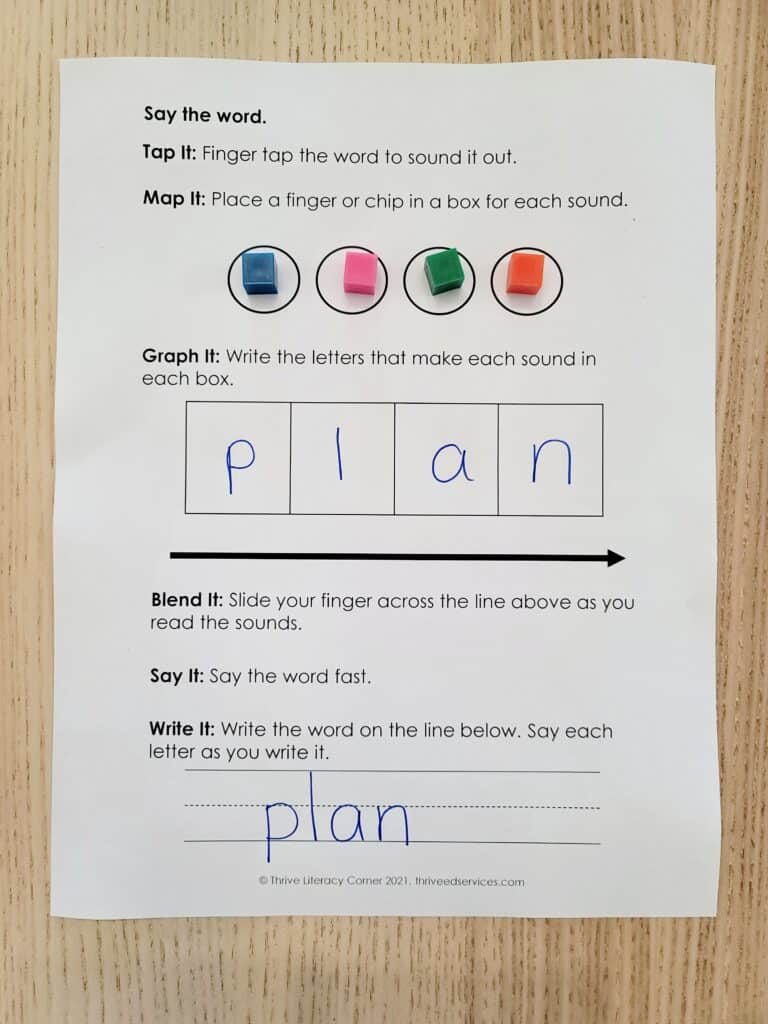
What is the difference between decoding and orthographic mapping?
Decoding is breaking down words into sequences of sounds in order to determine the appropriate pronunciation. Orthographic mapping is recognizing the visual outline of a word and using that word without having to sound it out. It’s recognizing the sequence of letters that makes the word.
Decoding looks like sounding out words, but if a word was already orthographically mapped it would be read instantly.
What are sight words?
Sight words are the words that we learn to recognize and read without having to sound them out or break them into parts.
As we continue to read, we build a sight word vocabulary. This is because words and word parts become orthographically mapped over time. They are now stored in long term memory.
If you’re interested in teaching high frequency words (aka sight words) in a way that develops orthographic mapping, check out my Heart Words Method blog post.
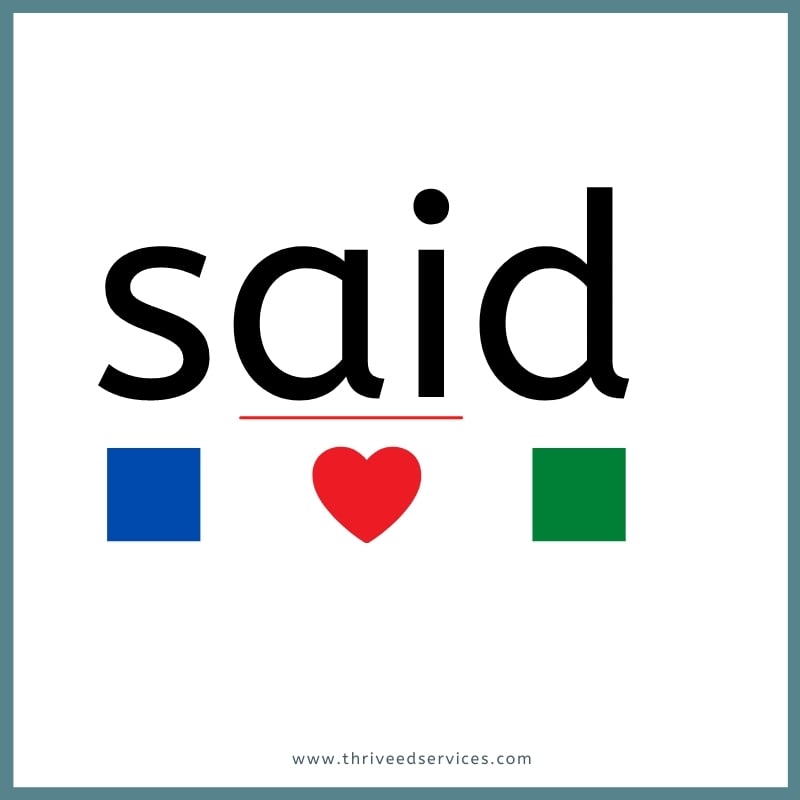
How does orthographic mapping develop?
When children are learning to read, they first start by sounding out each individual sound within a word. They will still be building their vocabulary of sight words at the same time.
Over time, they begin to recognize patterns in what they are reading because certain sounds appear over and over again in words.
They will eventually be able to read these patterns/units quickly without sounding them out every time.
For example, say students have read the word mat so many times that they now come across pat and sat and can read the –at part quickly because it has been orthographically mapped.
When children are introduced to new words, they use their sight word vocabulary to decode the new word because they have already created orthographic maps for these words.
But for this to happen, students need to be proficient in phoneme awareness and have automatic letter-sound associations. Therefore, students need lots of activities focusing on phonemic awareness and letter-sound associations in the early years.
According to David Kilpatrick, Ph.D., author of Equipped for Reading Success, with explicit instruction of phoneme-grapheme relationships (e.g., letter/sound correspondence), children can begin to read new “pseudowords” as accurate as 30% of the time by the end of second grade and 100% accuracy by the end of third grade (page 65-66).
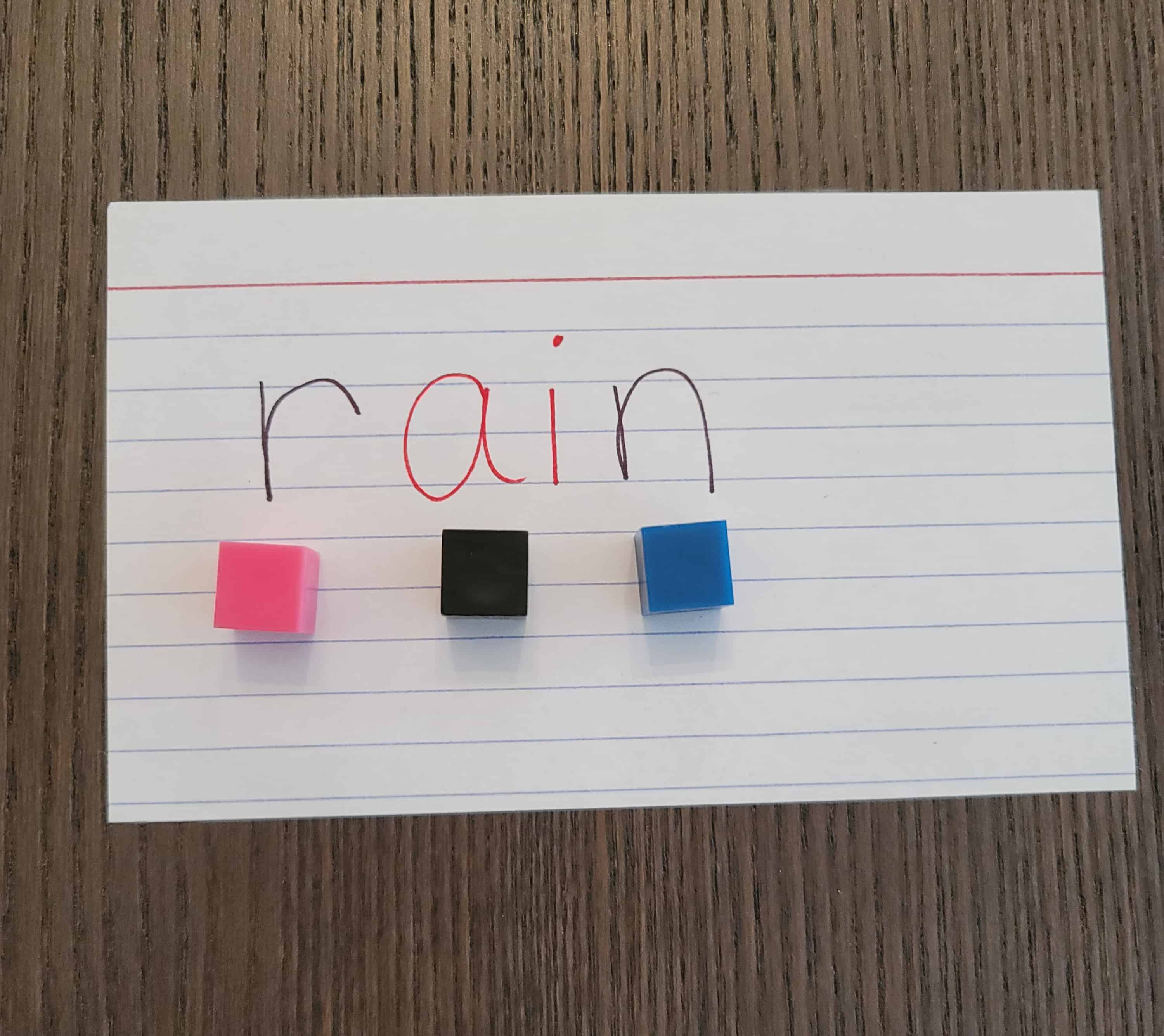
The Role of Advanced Phonemic Awareness in Orthographic Mapping
According to Kilpatrick, weak readers do not naturally acquire orthographic mapping because they lack advanced phonemic awareness skills.
For these students, it is important to provide intervention in phoneme addition, deletion, and substitution.
Below is an example:
- Say the word nap. Have the student repeat it.
- Ask them to say it again without the /n/. Be careful to say the sound /n/ and not the letter. The student should say -ap.
- Ask them to say nap again, but this time instead of /n/ say /l/. The student should say lap.
- Ask the student to say lap, but add a /s/ to the beginning. The student should say slap.
Now you would not actually do it as above as those tasks are on different difficulty levels, but I just wanted to give you an example of what advanced phonemic awareness tasks look like. You usually focus on one at a time, like just deleting the beginning sound, then you move on to deleting the ending sound.
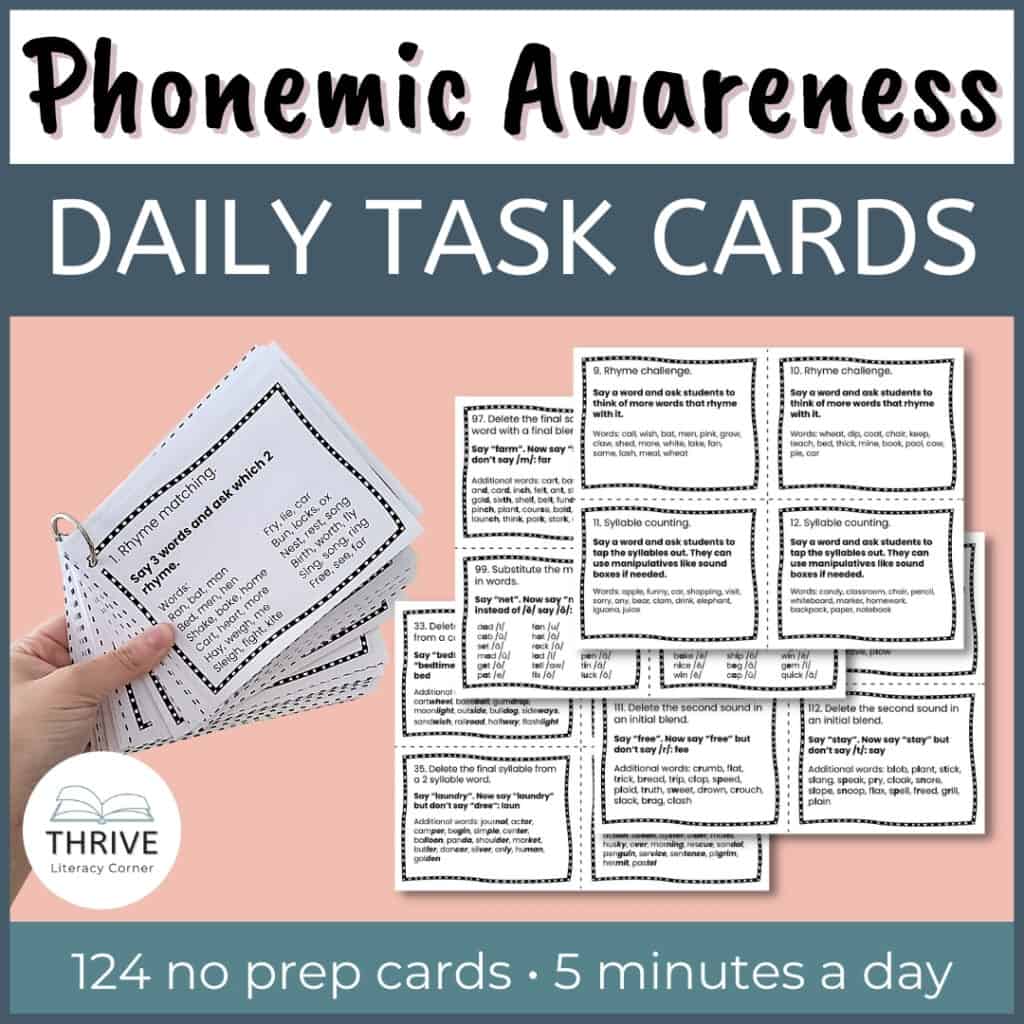
Check out my daily Phonemic Awareness Task Cards for quick daily activities that include advanced phonemic awareness skills.
Phoneme Graphing Mapping Activities To Develop Orthographic Mapping
Aside from doing phonological and phonemic awareness activities like the ones above, phoneme-grapheme mapping also develops orthographic mapping.
What is Phoneme-Grapheme Mapping?
Phoneme grapheme mapping is a visual way to represent the relationship between phonemes (sounds) and their graphemes (letters). Students connect the sound they hear with the letter or letters that represent that sound.
This can also be called word mapping. The template pictured below is part of my SOR Quick Start Guide, which you can sign up for here.

Word Mapping Activities
Here is how you would phoneme-grapheme map any word:
- Say the word. Students repeat the word.
- Finger tap the word to sound it out and count the phonemes.
- Use a manipulative to represent each sound. You can draw something on the board, like a line or dot to do this. It helps to use a different color for each sound.
- Spell each sound. Ask students what letters make the sound. Write the letters above the manipulative used to represent the sound. Students write the letters that represent each sound in the boxes.
- Discuss any irregular spelling patterns. Talk about the origin of the word, or the rule or pattern to help students remember it. Draw a heart above the tricky letters. Tell students they need to remember this part by heart.
- Ask questions relating to the sequence of the letters: What’s the first sound? Which letter says /b/? What sound does the letter t say? What letter comes after the /b/ sound?
- Students slide their finger across the line under the boxes while saying each sounds to blend the word.
- Students read the word aloud.
- Students write the word on the lines saying each letter as they write it.
You can grab my free template (pictured above) from my freebies library, or the paid version (pictured below) which includes teaching tips, lesson outline, and blank templates for words with 2 to 5 sounds.
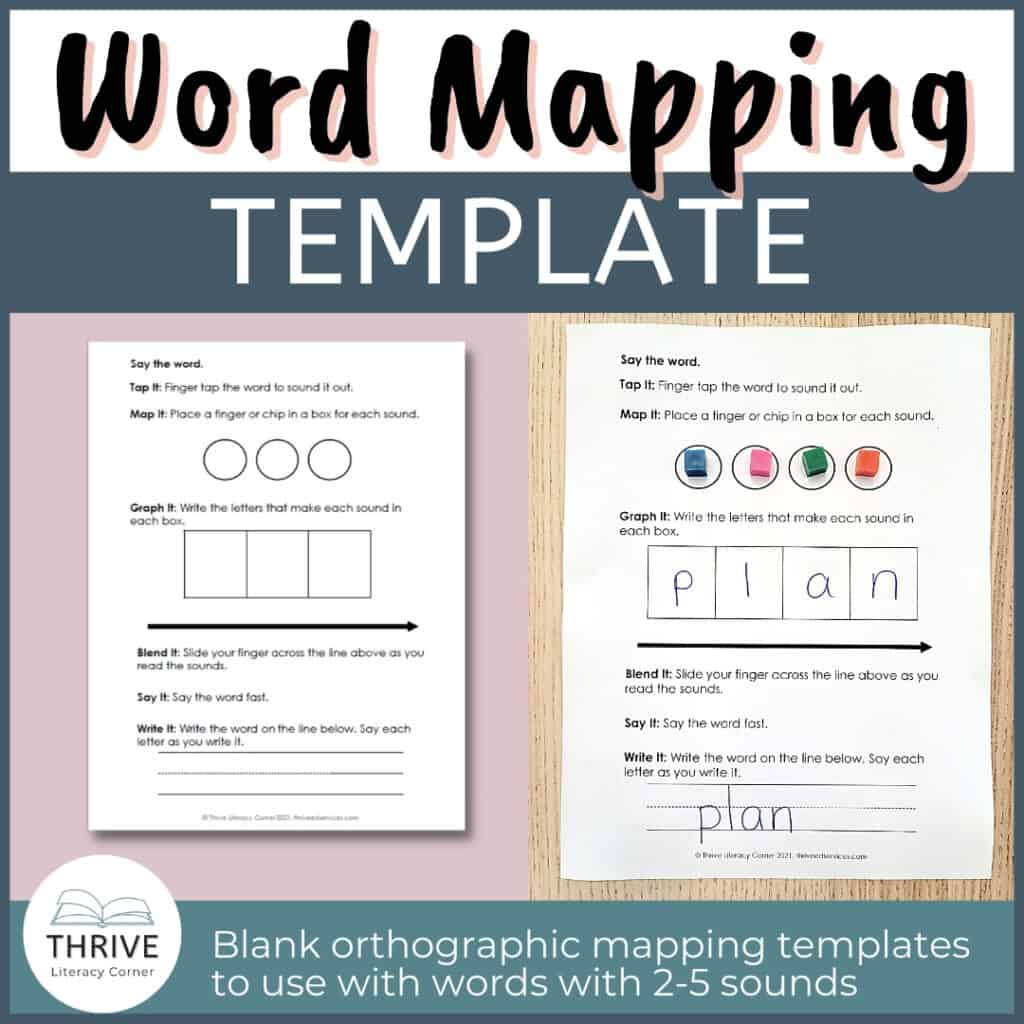
I use the Heart Word Method for irregularly spelled high frequency words. You can read more about that here, and find my Heart Words Mapping templates below.
Elkonin Boxes
Long time readers know how I love Elkonin boxes! I use them all the time because they really help develop these critical reading skills all students need.
Use sound boxes with chips to count phonemes, match phonemes to sounds, write the graphemes (letters) in the boxes to spell words, blend sounds together, delete, add, and substitute sounds, and more!
Grab my free sound boxes template in my freebies library (sign up here to access it).

Rimes
The rime is the word part that follows the onset of a word.
In the word sat, the onset is /s/ and the rime is /at/.
Working with rimes helps develop automaticity.
Start off with 2 sounds. Let’s use the example word top. Start with /o/ and /p/. Have students map those 2 sounds and blend them together to say /op/.
Next, add a sound before the /op/. Say something like, “this manipulative says /t/” and place it before /op/. Ask students to say the new word. Ask them to underline /op/.
Do this with a few other words and ask students to find the letters that say /op/ in all the words.
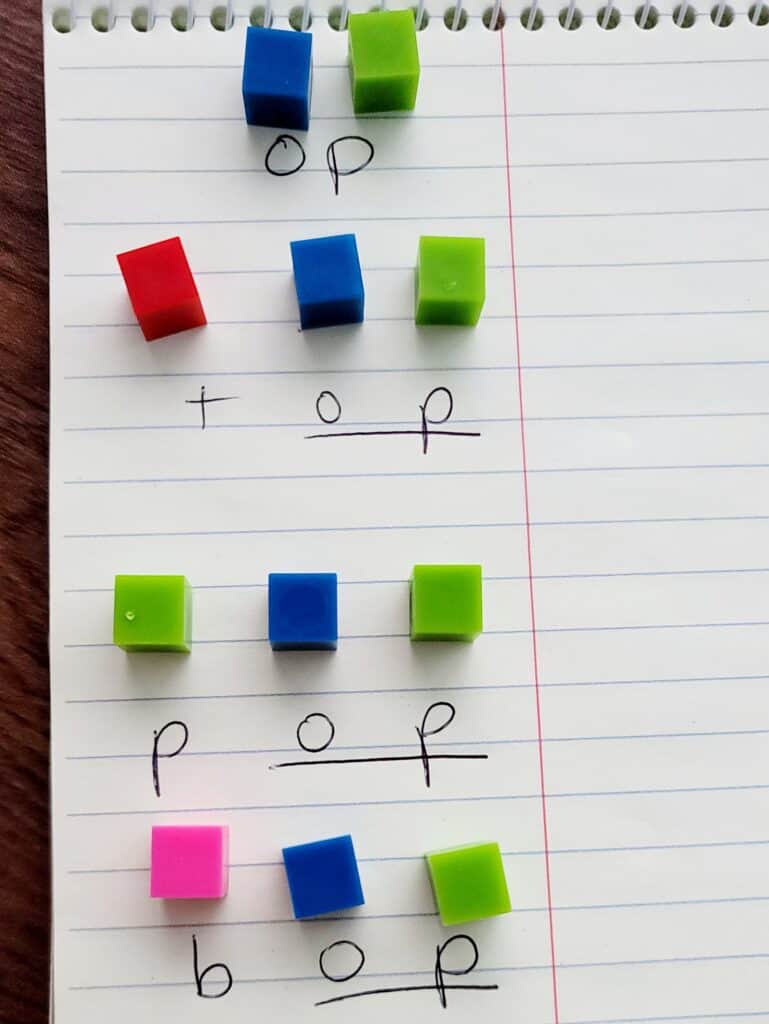
Blending Drills With Rimes
Another rime activity is using phonogram cards (phonics sound spelling cards) to blend initial sounds with a rime.
Set up 3 piles of phonogram cards: the initial sound, and the 2 cards that make the rime. Then swap the initial letter so students can sound out the new word using the same rime.
Using the image below as an example, you would swap the p card to reveal a new letter. Continue swapping that initial sound. Students should focus on decoding that sound, and quickly blend it with /ain/ so they’re not sounding out /ain/ every time the initial sound is changed.
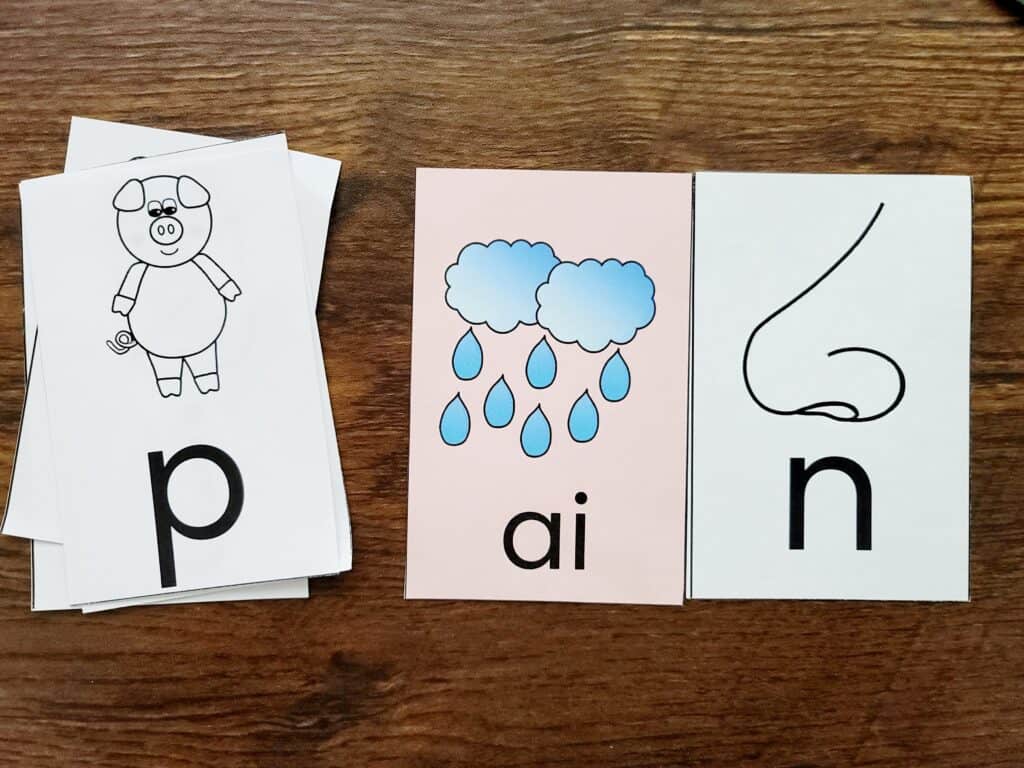
You can buy the phonogram cards I use here.
Word Sorts
Word sorts work with rimes so be sure to teach rimes first.
You can create word sort walls in the classroom too, to display some of the rimes you have taught and have students practice drills blending the onset and rime.
Silicone Bubble Poppers
Students love using these bubble poppers and they’re such a great tool for segmenting phonemes. Below you can see they can be used to listen to or say a word and pop a bubble for each sound they hear with the option of writing the word after. I have a free template for this bubble popper worksheet in my freebies library.
Sound Walls
Instead of a word wall, try a sound wall. Because sound walls focus on phonemes and their different graphemes, it’s a great foundation. Students learn the sounds and the different spellings for each sound in a way that makes sense phonetically.
Check out my post on sound walls here. And you can grab my sound wall resources in my shop to quickly and easily put a sound wall up in your room.
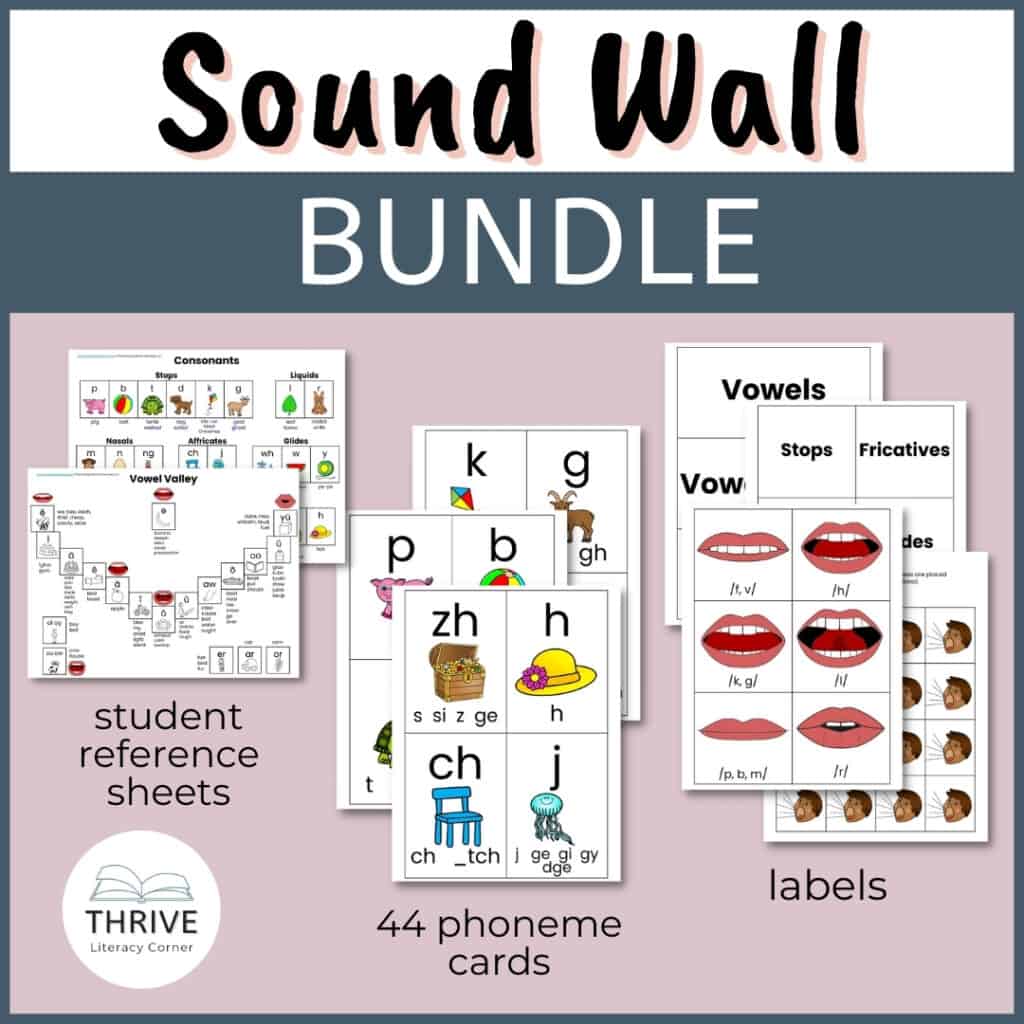
Bottom Line
I hope this post has helped you learn more about the process of orthographic mapping and how it affects literacy instruction. Hopefully, you can add some phoneme grapheme mapping activities to your lessons to help students develop their orthographic mapping skills.
And don’t forget to check out my word mapping resources below!
Sources:
- Equipped For Reading Success by David Kilpatrick, Ph.D
- Speech to Print: Language Essentials for Teachers by Louisa Moats
- The Science of Reading; Evidence for a New Era of Reading Instruction by Laura Stewart
- Reading in the Brain: The New Science of How We Read by Stanislas Dehaene
Want to remember this? Save Orthographic Mapping Activities to your favorite Pinterest board!

Delilah Orpi is the founder of Thrive Literacy Corner. She has a Bachelor’s degree in Special Education, a Master’s degree in TESOL, and is a member of the International Dyslexia Association. She is an experienced educator and literacy specialist trained in Orton Gillingham and Lindamood Bell. Delilah creates literacy resources for educators and parents and writes to create awareness about dyslexia and effective literacy instruction based on the science of reading.
Teachers, are you wondering how you can use Visual Thesaurus word maps to introduce new concepts to your students? Check out this excerpt from Sharon Walpole and Michael C. McKenna’s Differentiated Reading Instruction for some ideas.
CONCEPT OF DEFINITION
What Kind of Reader Will Concept of Definition Help?
Sometimes you will have to develop knowledge of Tier 3 words — words for which students have much less background. Concept of definition is a strategy useful for developing an understanding of words that represent entirely new concepts for young learners. It is likely to be especially useful for teaching content-specific vocabulary important to grade-level goals.
What Is the Instructional Focus of Concept of Definition?
The focus of this strategy is building conceptual knowledge by teaching new concepts in direct relationship to known ones. This strategy relies on the creation of a semantic organizer and is sometimes called word mapping. The word map that is created in the course of this instruction makes explicit the connections of a new word to known words and concepts.
Where Does Concept of Definition Come from?
This instructional strategy is based on an ancient idea, first discussed by Aristotle. He suggested that the definition of a noun must include the category to which the concept belongs as well as features that distinguish it from other members of that category. The notion of using a simple diagram to teach these relationships is far newer (Schwartz & Raphael, 1985).
What Materials Are Needed for Concept of Definition?
In order to implement this strategy, you need a word map that allows students to show connections. This word map might be drawn on the board, presented with an overhead projector, or duplicated on paper for students to use. A simple word map has a space for the word, the connections to its superordinate category (the class to which it belongs), its characteristics or attributes, and some examples. Figure 6.3 provides an example of such a map. In it, the word poultry is shown to be a member of the category meats. Specific characteristics are provided along with three examples.
How Do You Prepare for Concept of Definition?
This strategy is only useful when the target word is a member of a specific category, with particular characteristics and examples. However, many content-area terms are of this kind! The strategy is useful both for developing new concepts and also for teaching children to generate definitions as they are learning new words.
How Do You Implement Concept of Definition?
This strategy is implemented first with known concepts so that children grow accustomed to how the word maps work. Then, gradually, it is used to teach less familiar concepts. For example, you could introduce word maps with the concept of a flower, with which the students are already familiar. The word map would indicate that a flower is a type of plant and that flowers have petals, stems, leaves, and roots. The map might include roses and daisies as examples of flowers. In presenting the map, you would point out that grass (among other types of plants) is not included because it is not a flower. Once students understand what a word map is, you can use this strategy to teach words and concepts directly as part of your content-area instruction, or you can use it either before or after a read-aloud. We do not think it would be appropriate during a read-aloud, as teaching an individual word might take as long as 5 minutes — too long to stop during reading without compromising comprehension.
How Do You Know If Concept of Definition Is Working?
You know this strategy is working when children show evidence that they have learned the concepts targeted and when they can use the map on their own or during discussion to formulate and remember definitions. As with all vocabulary strategies, the goal is to teach the particular words deeply and also to teach wordlearning strategies so that children can benefit more from incidental word-learning opportunities.
From Differentiated Reading Instruction by Sharon Walpole and Michael C. McKenna. Copyright 2007 by Guilford Press. All rights reserved. Reprinted with permission of Guilford Press.

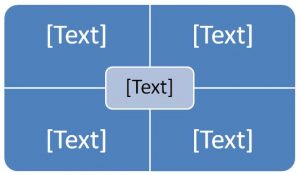







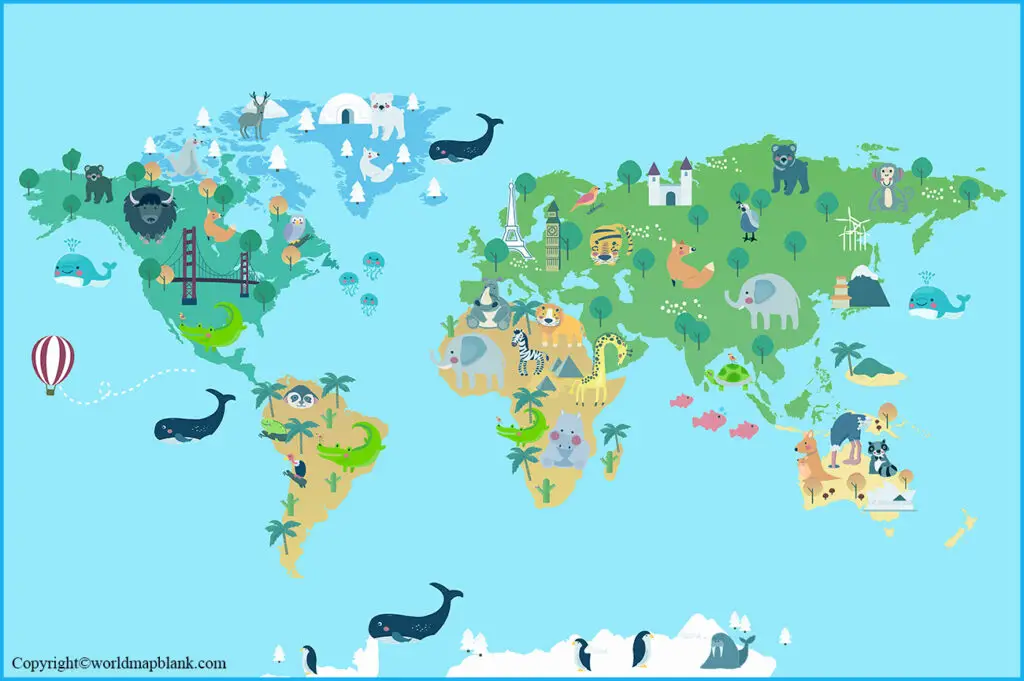
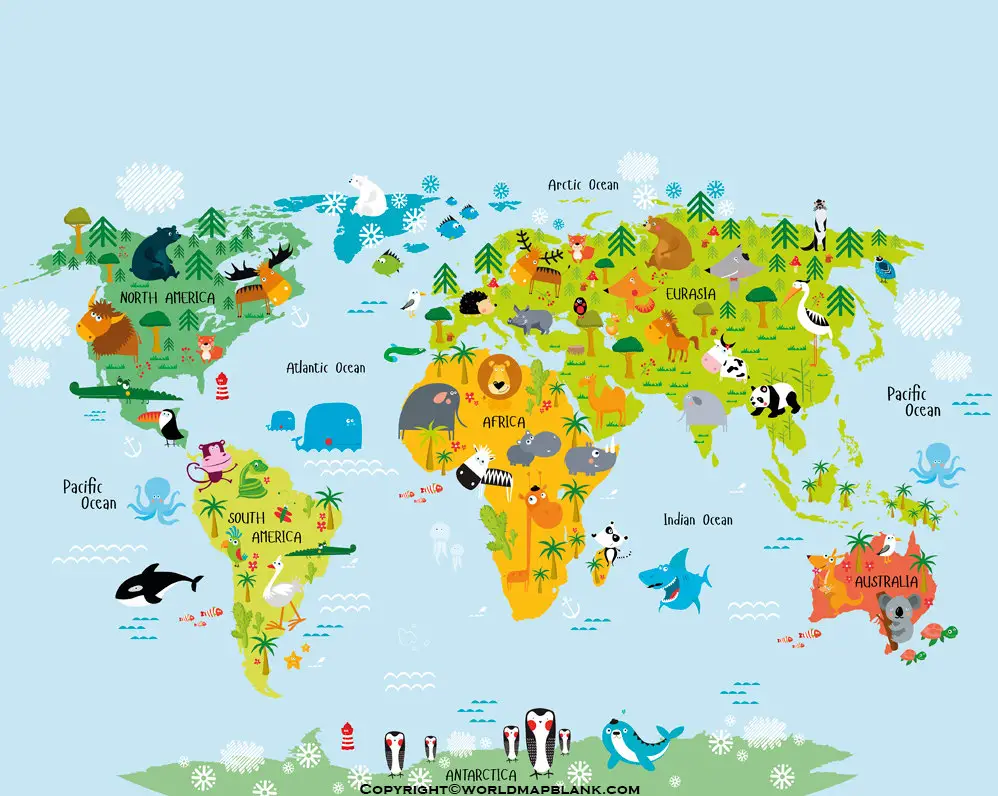
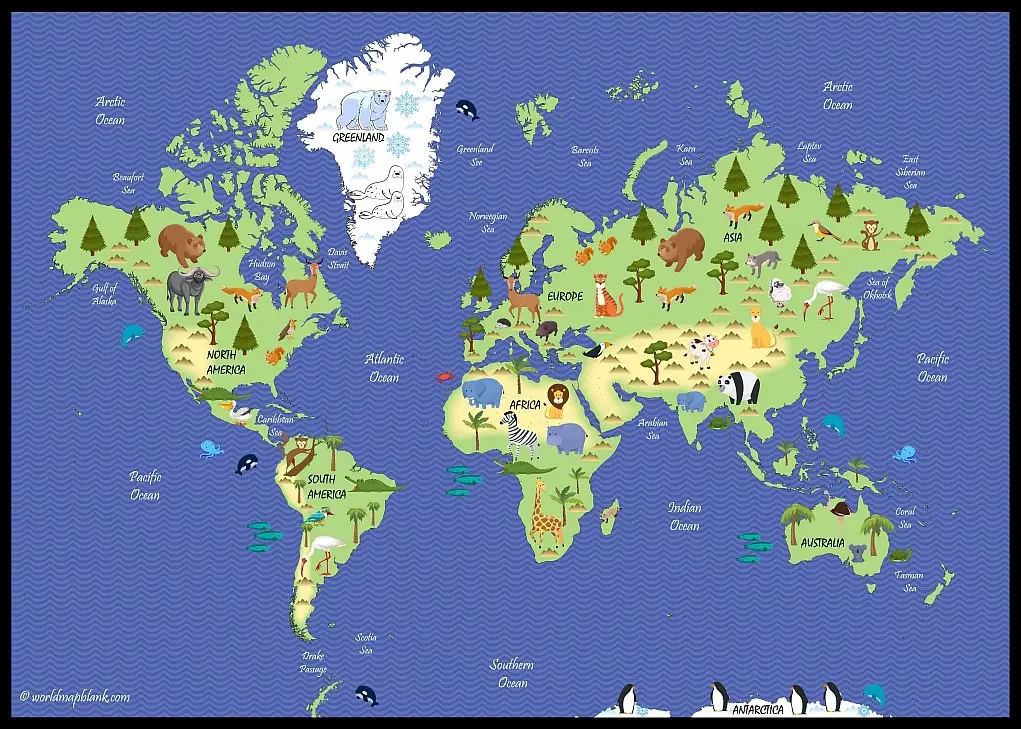
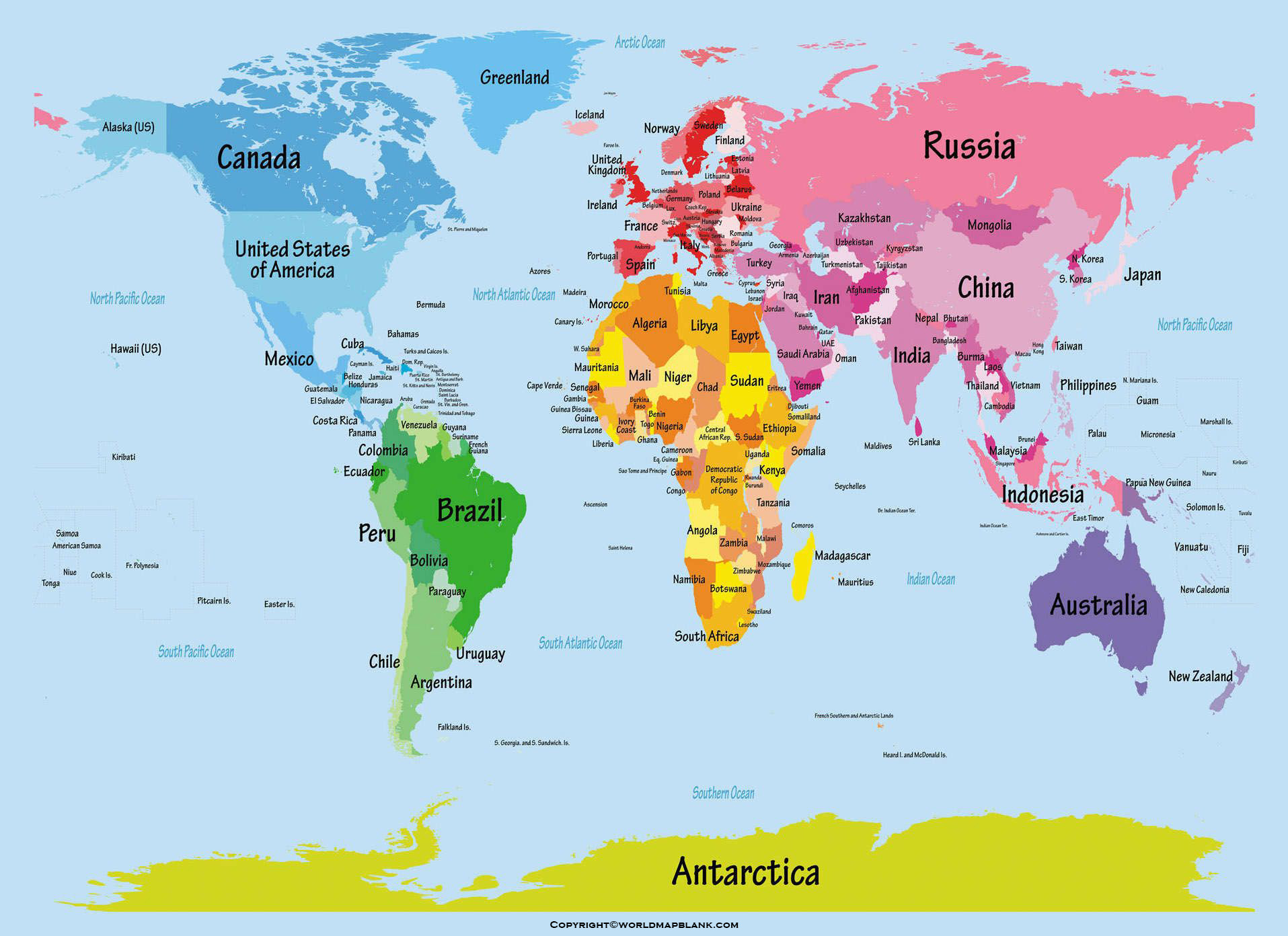
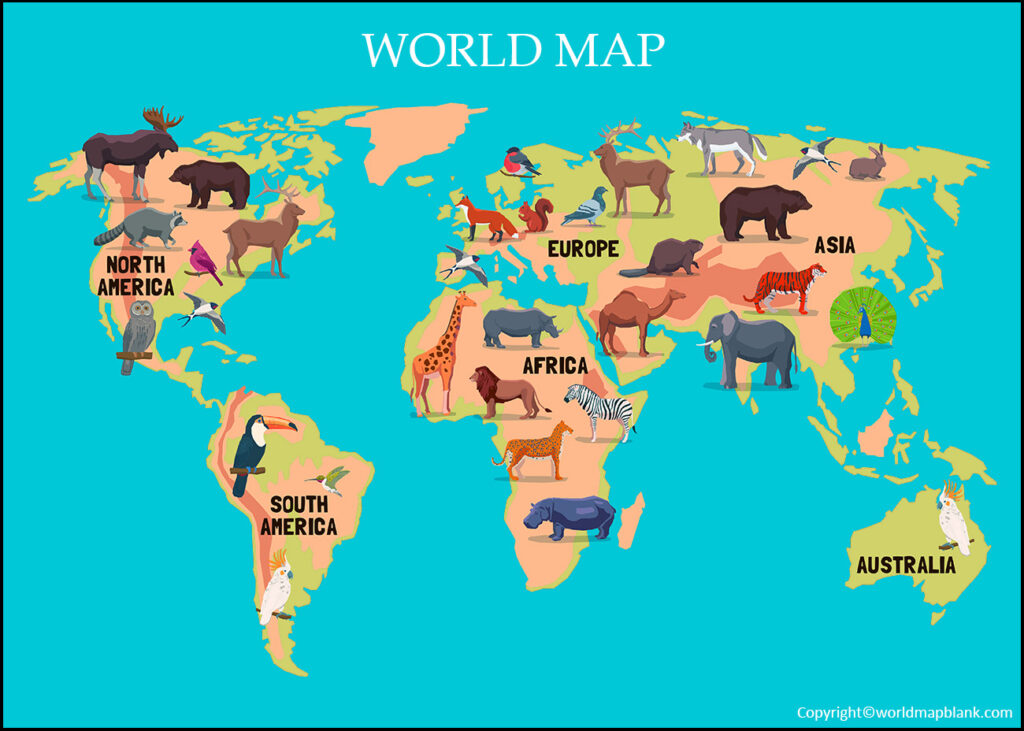
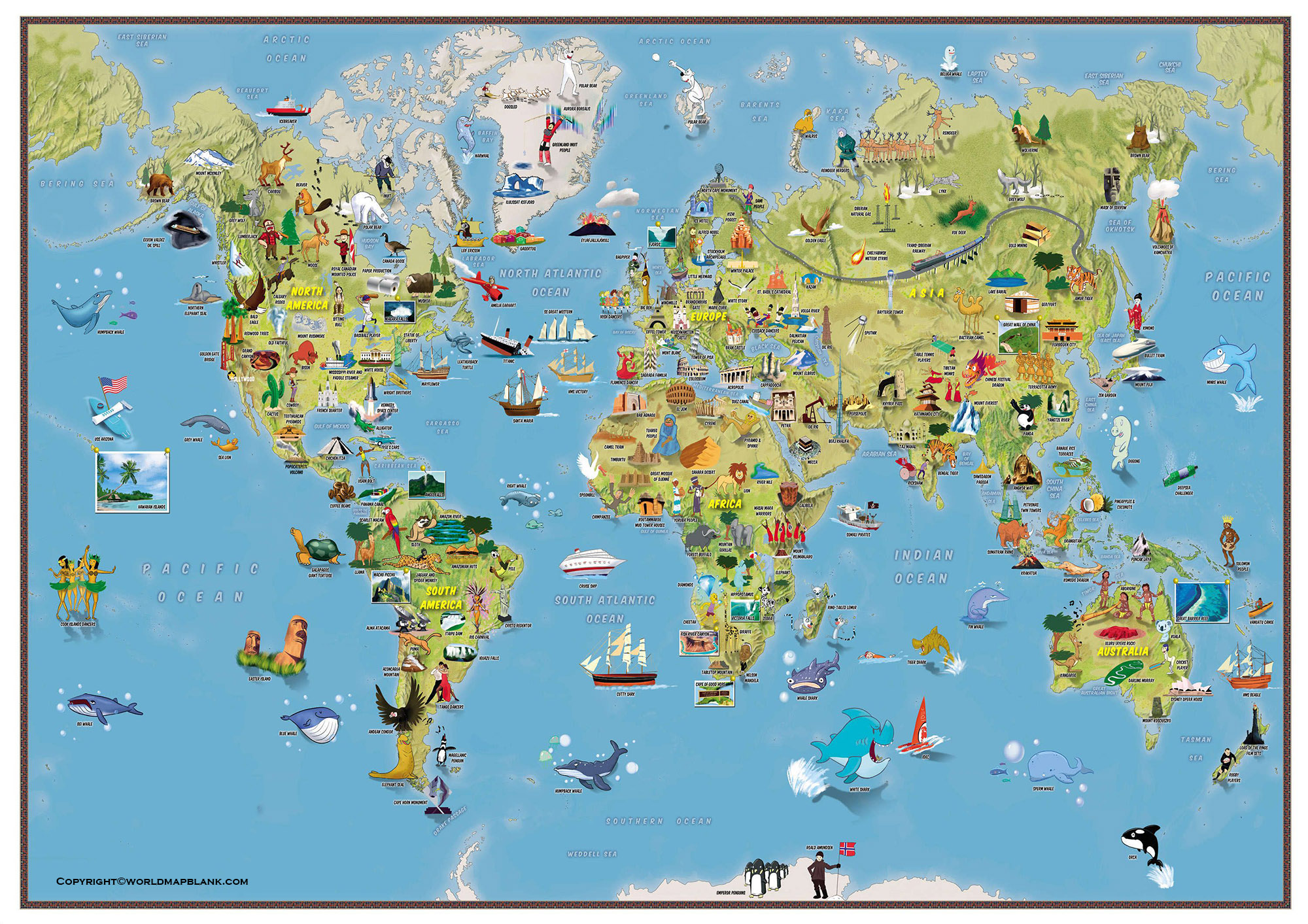
![Free Blank Printable World Map For Kids & Children [PDF] 1 World Map For Kids Printable](https://worldmapswithcountries.com/wp-content/uploads/2020/10/World-Map-For-Kids-Printable-1024x683.jpg)
![Free Blank Printable World Map For Kids & Children [PDF] 2 Interactive World Map For Kids](https://worldmapswithcountries.com/wp-content/uploads/2020/10/Interactive-World-Map-For-Kids.jpg)
![Free Blank Printable World Map For Kids & Children [PDF] 3 World Map For Children](https://worldmapswithcountries.com/wp-content/uploads/2020/10/World-Map-For-Children-1024x626.jpg)
![Free Blank Printable World Map For Kids & Children [PDF] 4 Interactive World Map Printable](https://worldmapswithcountries.com/wp-content/uploads/2020/10/Interactive-World-Map-Printable-1024x576.jpg)
![Free Blank Printable World Map For Kids & Children [PDF] 5 World Map For Kids](https://worldmapswithcountries.com/wp-content/uploads/2020/10/World-Map-For-Kids-1024x576.jpg)


